Playing chords, chord progressions, and songs by ear is all about getting your ear to recognize the sound of chords and chord progressions and just like melodies, train the fingers and the hand to follow your inner ear and play these chords, chord progressions, and songs on demand.
Playing chords, chord progressions, and songs by ear is all about getting your ear to recognize the sound of chords and chord progressions and just like melodies, train the fingers and the hand to follow your inner ear and play these chords, chord progressions, and songs on demand.
Available for Premium Site Access Plans Only
This training involves the mind, hands, and ear. Of the three the hands always need the most work as they can't hear or understand anything - only what they have been trained to do.
Learning to hear chord progressions and the chord changes. This is where to start and will get you off the page. Don't try and learn by ear. Learn from a position of knowledge and with an organized plan. Playing by Ear
is for playing NOT learning.
However, the fact is that it's actually very uncommon for individuals to be able to Play by Ear
with no apparent effort.
If you are like most people new or relatively new to learning to play an instrument, you need a plan to train your fingers to follow your ear melodically, harmonically, and rhythmically. This comes from an understanding of the music principles that drive music and lead the ear to direct the fingers so that then, and only then, can you start on the road to Playing by Ear.
Whether performing or practicing, music involves three elements: your mind, your hands, and your ear. When performing music, your ear directs your hands. And if all goes well, your mind only gets involved when things don’t go as planned. Getting to this performance goal, whether it’s simply performing for your enjoyment or on stage, takes work and an organized approach to developing an “ear-hand-mind” connection, so all will work together.
Common wisdom states that it takes 10,000 hours to master any skill. This is essentially true — it does take hours and hours of dedicated, quality practice and exploration. I've found this to be especially true when learning any musical instrument, even the ukulele, despite its reputation as an easy to learn instrument. Getting proficient and comfortable in performance and learning to play by ear takes — not mindless hours and hours of practice, but an organized, dedicated, systematic approach with distant goals. These are the building blocks to ensure that you reach your ultimate potential as a musician.
The Internet is full of debate and examples of people who seem to be able to cheat at this without putting in the time. I regret to inform you that there is NO shortcut, and simply putting in the time alone is also not always enough. Many people put in the time. So, what makes someone more successful when learning a musical instrument than another? Or, more importantly, how can you set yourself up for success?
Tips for Success
Here you go — my tips for success:
Get a Coach, Advisor or Teacher — and not just any anybody. Whether you have a coach, advisor, teacher, kumu, guide, guru or whatever you call them, they must be successful with a proven track record of helping others obtain their goals — not simply good players. Finding the right coach can take work, trial, and error. Some look to performers of their chosen instrument to become their teachers. This can be a good place to start, but not all performers make good teachers. However, they probably had a good teacher. It's somewhat like getting past the Academy award-winning actor and finding their most significant teacher — the behind-the-scenes person who played an invaluable role in the actor's success. Early in my development, I found Chuck Anderson. So, hopefully you're being as lucky as I was to find a great teacher, coach, or mentor early in your development.
Practice Deliberately — have distinct goals and a plan for each session. Monitor your success, practice specific skills and problem areas, and constantly strive for improvement. If your practice sounds good, you're probably not really practicing, but may simply be repeating something you can already do. Work instead on what you really need to improve: work on what you can’t do, or want to do better.
Teach Others — we learn by doing, and learn more and learn better when we teach others what we know. There is nothing like presenting what you know to others to truly understand it yourself. In all my years of teaching, I've found this to be extremely beneficial in my own musical development.
The Mind, the Ear, and the Hand – each one of these needs training, with specific steps to obtain the Playing by ear
goal. The ear needs to recognize the intervals, chords, and rhythm that make up the melody, harmony, and rhythm of a song. But for all the training needed for the mind and ear, it's largely up to the hands when playing an instrument, that is, they need the most training to successfully execute what the ear wants. So, plan, set your goals, find a good teacher, and practice, practice, practice!
Playing by Ear
vs. Learning by Ear
Don't get Playing by Ear
and Learning by Ear
mixed up. It's hit-and-miss to try to learn by ear. You need to train your ear and brain to understand what is going on to play by ear. Understanding the principles of how music works will go a long way on your ability to play by ear.
Start with training your ear to identify (hear) and sing melodic intervals .
Related Lessons, Videos, Lesson Series, Songs, Books & Reference Charts, Resources & Assets, Workshops are below.
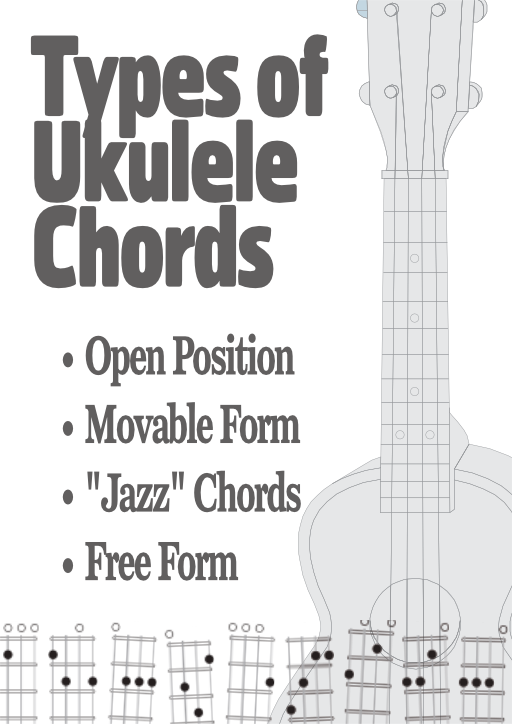
Naturally, for Ukuleles, all chords need to be voiced using only the four strings available. You would think that this is limiting, when in actuality it's quite liberating when you learn the makeup of chords. Chords can be categorized into four categories: “Open Position Chords”, “Movable Form Chords”, “4-part - a.k.a. Jazz Chords”, and “Free Form Chords.”

Core Chords for Ukulele, The Big Six - From four F7 chord voicings or shapes, your can build your massive 4-part, a.k.a., “jazz” chord vocabulary. Beyond basic open position chords, basic movable form chords and a core set of 4-part chords. There are just too many chords shapes too memorize.

Cool Chords are those crazy chords you won't find in a chord dictionary, software, chord chart, etc... They're a product of understanding how chords are constructed and how to derive them from known chords. These are the chords other players will say: "What's that crazy chord you're playing?".
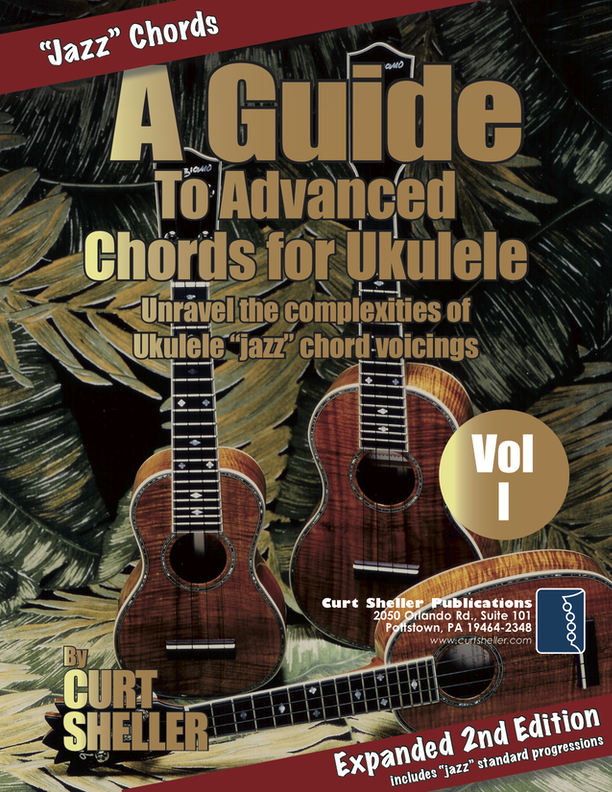
Beyond learning basic Ukulele chords, most players struggle with advanced chords. Commonly called "jazz" chords, these more sophisticated voicings find a wide use in all forms of music. A Guide to Advanced Chords for Ukulele - presents a highly organized and efficient approach to the mysterious subject of advanced chords. Chord dictionaries are not the answer.

Covering basic ukulele chords that ALL uke players MUST know, movable chord forms, rock uke chords, how to transpose chords, learning the ukulele fingerboard and an introduction to 4-part jazz chords and more... FOR LEFTIES - Tunings: C, G, or D Tunings. Low or high string four variations.

Harmonic Analysis is the understanding of the functional sequence of chords. It is the process used to analyze the harmonic structure of a progression, song or composition. This analysis is then used to make scale selections for improvisation and chord substitution.
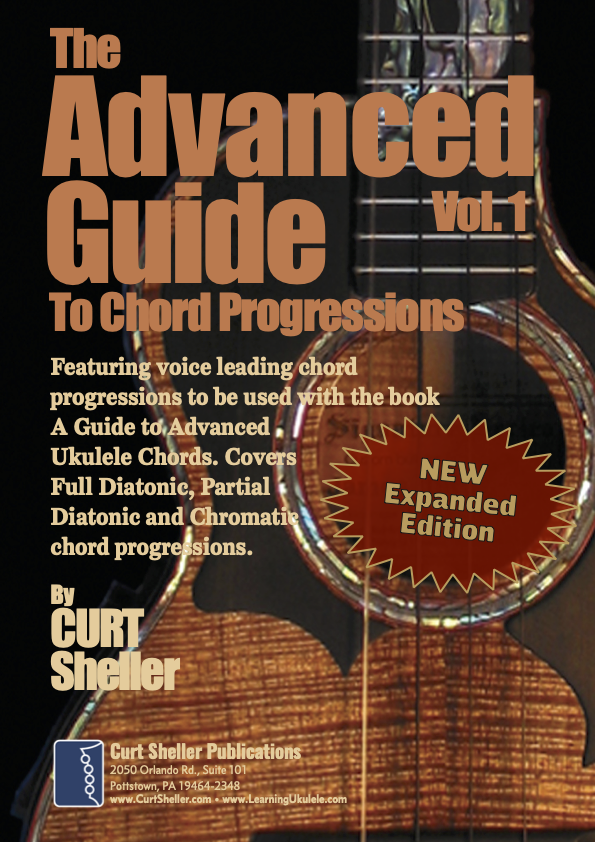
Before individual chords become the background of songs, they must be put into orders called chord progressions. The Advanced Guide to Chord Progressions for Ukulele organizes progressions according to string family, position, voice leading and chord magnetism.
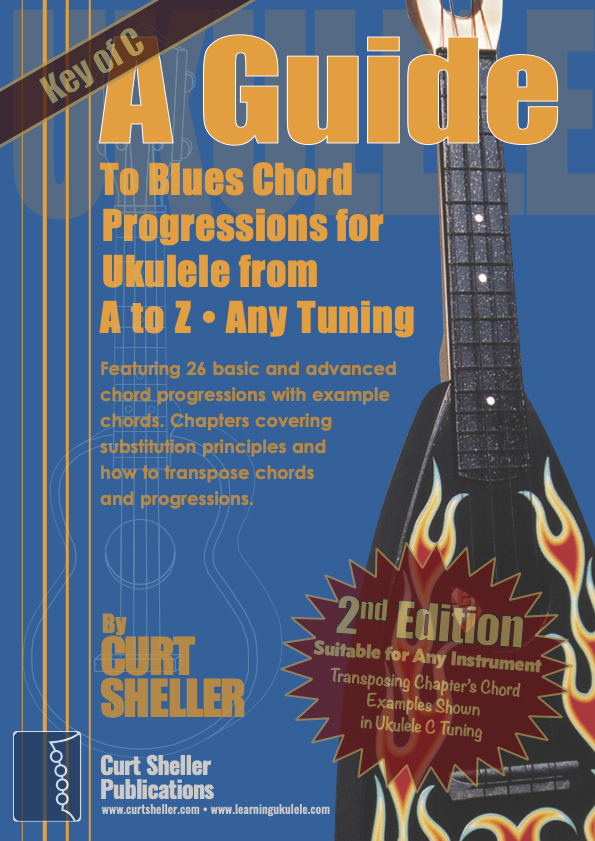
The Blues are at the heart of all American music. It has influenced Country, Rock, Folk, Jazz, Bluegrass and just about every form of American music we listen to today. 26 blues progression in C and G tuning, progressing from basic to advanced jazz progression, with chord grids and substitutions explained.


return in your investment)—it is this— learning the
f*ckingnotes of your OWN instrument. Sorry for the tough talks—but it is sooooo true!


Learn to read single note melodies in the first/open position is a lot easier than you might think. Book: Ukulele – Reading Music Series – Primer

An organized collection of daily practice and reference material for the contemporary ukulele player for developing the vocabulary and knowledge necessary for single note playing. Book: Daily Practice Material for the Contemporary Ukulele
Checkout the Books & Reference Charts for additional Handy, Dandy Reference Charts.

Ukulele Fingerboard Chart for C Tuning, Low or High G – G C E A

Ukulele Fingerboard Chart for G Tuning, Low or High A – D G B E

A handy reference chart of all 15 major and relative minor key signatures. US Letter 8.5 x 11 sized (ANSI-A) , A4







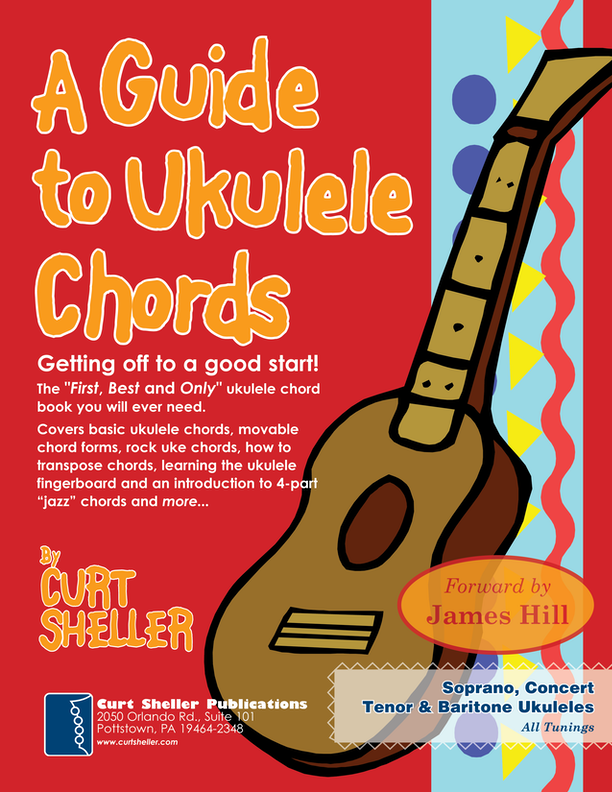
.jpg)